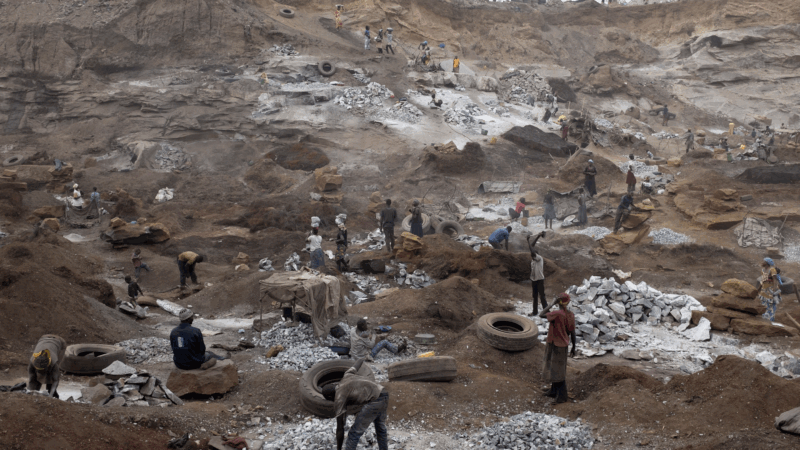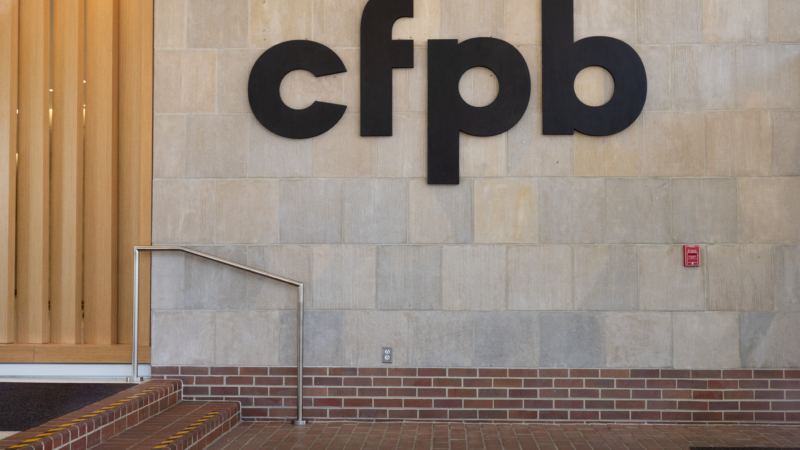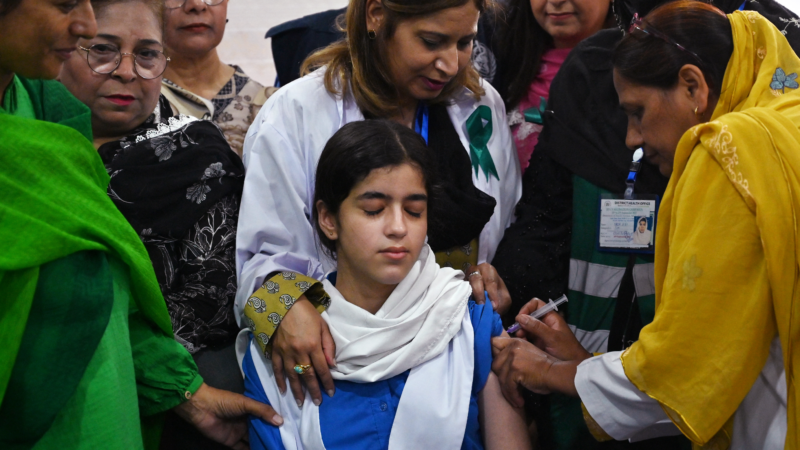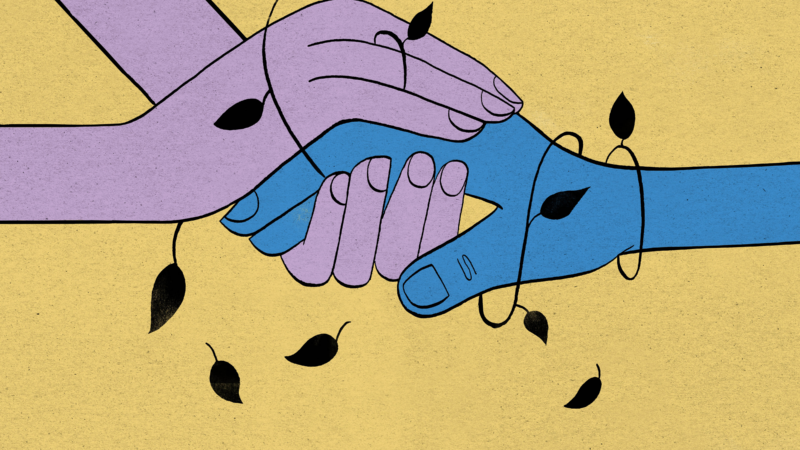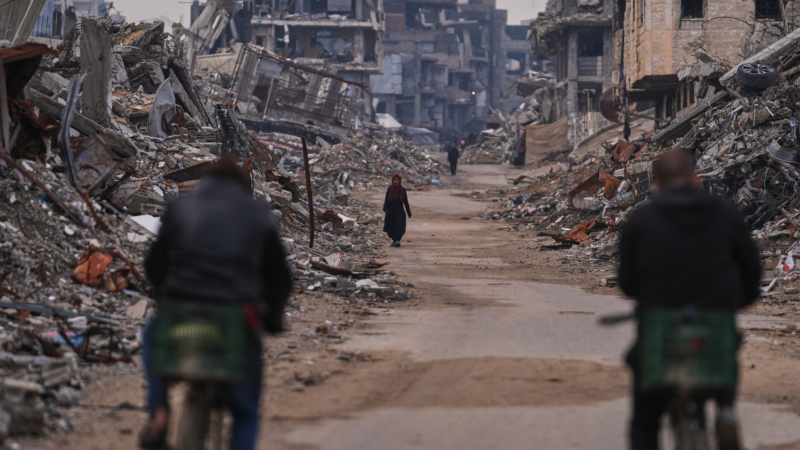How many kids go to work instead of school?
Child labor sounds as if it belongs to a long ago era, but for 138 million children it is a daily routine.
“These are children who work under the hot sun in farms, tending crops when they should be in school,” says Claudia Cappa, a senior analyst with UNICEF. “They are scrubbing floors behind closed doors where they are extremely vulnerable to violence and exploitation, these children will carry very heavy loads in mines, breathing in fumes that damage their health.”
She’s one of the authors of a new report on child labor from UNICEF and the International Labor Organization.
Despite the grim topic, the report offers encouraging news: Steady progress has been made in reducing child labor globally. In the past five years, the number of working children has dropped by 20 million.
But the goal to eliminate it is far from being met.
“We have nearly halved the number of children involved in child labor globally since 2000 from 246 million to 138 million children,” says Theresa Betancourt, director of the program on children and adversity at Boston College. “But that’s still unacceptable, so we have a long way to go.”
Of the 138 million children, 54 million toil in environments that are harmful to their physical and mental health, according to the report.
That number includes children forced into armed groups or subject to sexual exploitation — the most extreme forms of child labor. Researchers say it’s difficult to obtain reliable data on those issues.
Asia’s successful strategies
The reason behind these startling numbers is straightforward. “We have plenty of evidence that indicates that poverty is a key driver of child labor,” says Cappa. Most children enter the workforce around the age of 5, often helping a family business, she says.
“So reducing poverty is a critical strategy for eliminating child labor. We also know that children need to go to school. Schooling has to be free. So we know what works.”
Asia has embraced that philosophy with positive results. The percentage of children who work has dropped from 13% in 2008 to just 3% in 2024 — from 114 million to 28 million.
Governments get credit for this improvement, says Betancourt. They’ve taken steps to aid poor families — giving them cash, for example — and they’ve taken measures to ensure that kids go to school.
“We have seen investments in Asia in quality education, universal access to education, compulsory education, which means children are spending their time learning and in school settings,” Betancourt says. And there’s an added benefit: Kids in school often get free meals.
Why rates are high in sub-Saharan Africa
In contrast, sub-Saharan Africa has the highest global rate of child labor — about 1 in 4 kids work. And the report points out there has only been a slight improvement, with the rate dropping from 25% in 2008 to 22% in 2024.
There are several reasons why child labor is harder to address in these countries..
Most of child labor overall is in agriculture, according to the report. And in sub-Saharan Africa, where agriculture is the main livelihood, families often enlist their children in their farm work, according to Cappa.
And even if parents want to send their kids to school, there may not be a school they can enroll them in, says Betancourt. With a rapidly growing youth population in Africa, the number of schools has not kept pace. Betancourt says there’s been an underinvestment in building new schools in sub-Saharan Africa in particular.
Another reason for the higher rates of child labor in sub-Saharan Africa are the ongoing and emerging conflicts. This violence destabilizes economies, adding more pressure for struggling families to put their children to work.
An uncertain future
Future progress is in jeopardy in this era of aid cuts. Some of the world’s wealthiest countries fund programs in low and middle income countries that aim to address poverty and access to education. But in the past year, countries like the U.S. and the U.K have cut billions of dollars in funding for such programs. Experts are concerned that could slow down the advancements made in eliminating child labor as well since the issues are so interconnected.
For UNICEF’s Claudia Cappa, the matter of child labor is a personal one. Her own mother worked cleaning houses and farming in the south of Italy when she was 9 years old, because her parents thought she would be more useful to the family if she worked rather than went to school.
Cappa’s mother is now 75 years old, and Cappa often thinks of the opportunities she herself had that her mother did not, just one generation away.
“I didn’t have the same level of pressure,” she says. “I was able to go to school, I was able to graduate, to apply for a position in UNICEF, to come to the United States and to speak to you today.”
Transcript:
MICHEL MARTIN, HOST:
More than 100 million children around the world wake up and, instead of heading to school, they go to work, often on farms or in mines. A new report shows progress has been made in reducing child labor, but a path to eliminating it entirely is elusive. Here’s NPR global health correspondent Fatma Tanis.
FATMA TANIS, BYLINE: In 2024, 138 million children around the world were sent to work.
CLAUDIA CAPPA: These are children who work under the hot sun in farms, tending crops, when they should be in school.
TANIS: That’s Claudia Cappa, senior adviser at UNICEF and one of the authors of the new report. Fifty-four million of those children were in hazardous work environments.
CAPPA: They are scrubbing floors behind closed doors, where they are extremely vulnerable to violence and exploitation. There are children who carry very heavy loads in mines, breathing in fumes that damage their health.
TANIS: Sending their children to work instead of school is a survival strategy for many families who are living in extreme poverty. Still, the report shows a lot of progress has been made. There’s been a 20 million reduction in the number of working children since 2020. Much of that progress is seen in Asia where social protections like giving cash to families in poverty have helped kids stay in school.
CAPPA: Now, the case of Africa is a little bit more complex.
TANIS: Especially in sub-Saharan Africa, progress has been much slower. The prevalence of child labor dropped only a few percentage points since 2008. One reason is the child population is growing, but there aren’t enough schools for them. Theresa Betancourt is the director of the Program on Children and Adversity at Boston College.
THERESA BETANCOURT: There was great progress being made globally in access to quality education. I think we’ve seen less of this in the very poor countries in sub-Saharan Africa.
TANIS: And without schools, families send kids to work instead. There’s also ongoing and emerging conflicts in sub-Saharan Africa, which adds more burden to families struggling to survive. For UNICEF’s Claudia Cappa, the issue of child labor is a personal one. Her own mother worked cleaning houses and farming in the south of Italy when she was 9 years old.
CAPPA: I didn’t have the same level of pressure. I was able to go to school. I was able to graduate, to apply for a position in UNICEF, to come to the United States and to speak to you today.
TANIS: Progress is possible, Cappa says, but only if both governments and families invest in the future of children.
Fatma Tanis, NPR News.
Judge orders Trump administration to continue to seek funding for the CFPB
The order is the latest in a complex legal battle over the fate of the Consumer Financial Protection Bureau, a watchdog agency.
In a year of steep challenges, there were still shining moments in global health
The Trump administration's deep cuts in U.S. foreign health aid had a devastating impact. Yet there were achievements of note in spite of it all.
An escalation in Yemen threatens to reignite civil war and widen tensions in the Gulf
Saudi Arabia bombed Yemen's port city of Mukalla, targeting a shipment of weapons from the United Arab Emirates for separatist forces. The UAE later said it would withdraw its forces from Yemen.
Cecilia Giménez, the artist who ‘restored’ the face of Jesus, has died at 94
Giménez international attention after she attempted to restore an old fresco. While it was immediately ridiculed at the time, the piece eventually turned into a tourist attraction.
What being around death taught this hospital chaplain about life
J.S. Park helps patients and their families cope with death every day as a hospital chaplain. He explains what to expect as a person is dying, and how to reckon with uncomfortable feelings about death.
Israel says it will bar aid groups, including Doctors Without Borders, from Gaza
Israel accused Doctors Without Borders, one of the largest health organizations operating in Gaza, of failing to clarify the roles of some staff that Israel accused of cooperation with militants.

